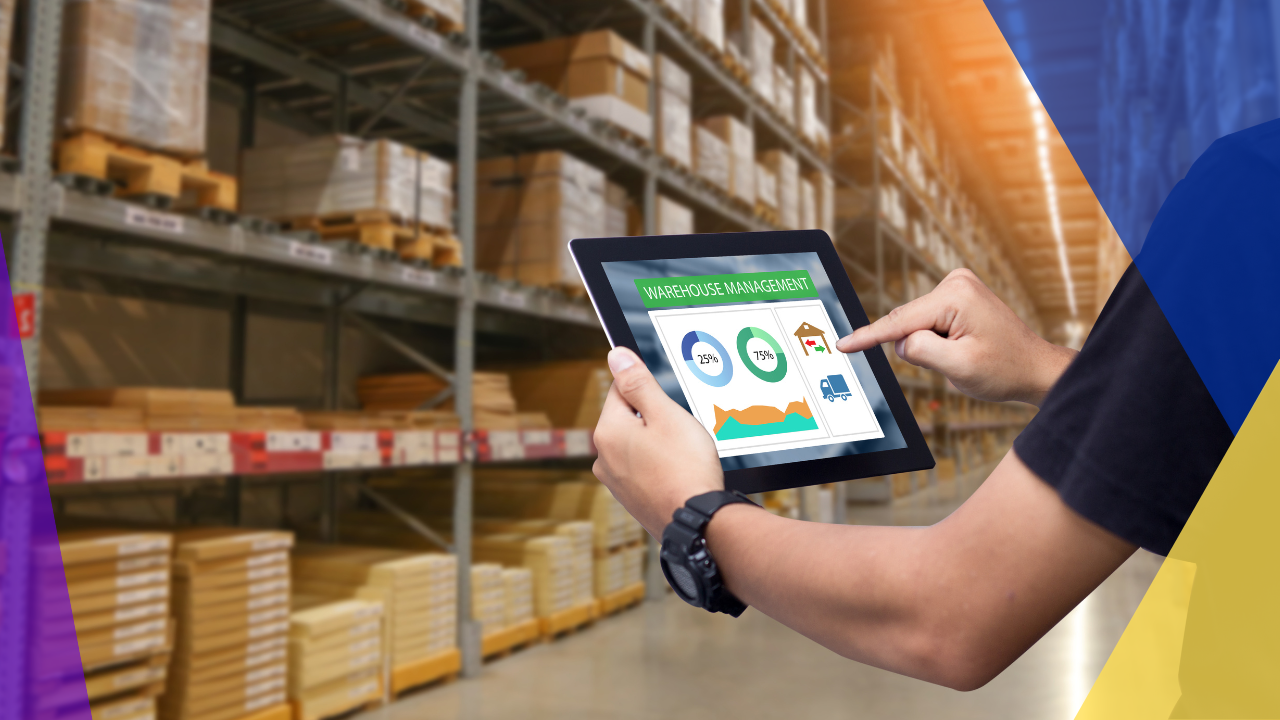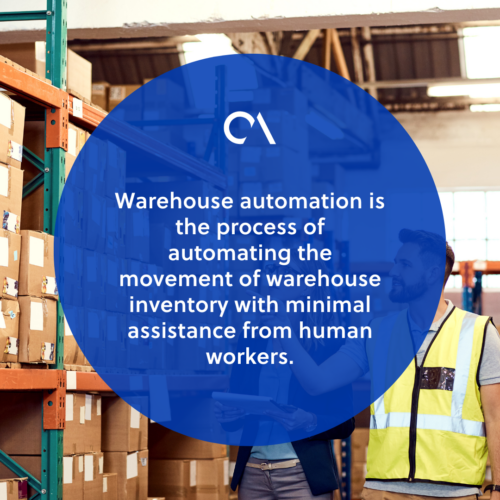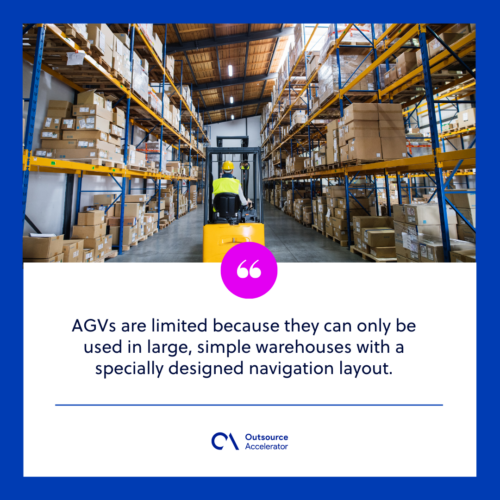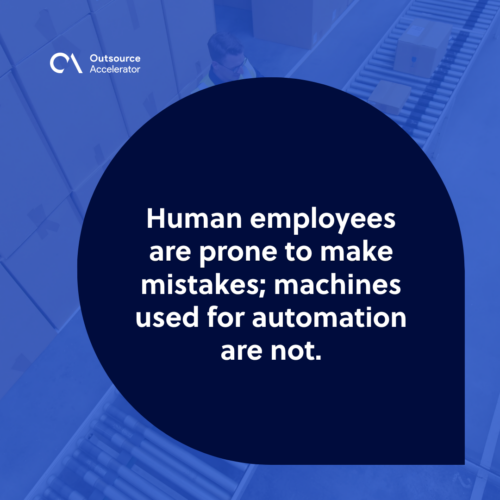Warehouse automation technologies to improve your business

There are three levels of warehouse automation status: manual, partially automated, and fully automated.
In a manual warehouse, all operations are performed by humans. For a partially automated warehouse, several processes are automated, but not all of them. The ones chosen to be automated may depend on which will grant the most efficient and economical operations.
In some instances, partial warehouse automation may be a better fit than fully automating it or keeping it manual.
As for fully automated, there is almost no need for a human employee. Technologies are programmed to store and retrieve goods automatically.
This article explores warehouse automation, its benefits, and the different types of technology it uses.
What is warehouse automation?
Warehouse automation is the process of automating the movement of warehouse inventory with minimal assistance from human workers. It only involves employee control done through a warehouse management system.
Automation doesn’t necessarily require robots; sometimes, it refers to using software to reduce or completely replace manual labor.
Automated warehouses help businesses meet their customers’ demands.
It starts with a warehouse management system (WMS) which supports data analysis and automates manual processes and data capture, as well as inventory control.
These systems work with other technologies to effectively manage and automate tasks across different businesses and their warehouses.

There are two types of warehouse automation:
Digital warehouse automation
Digital warehouse automation uses software and data to minimize manual workflows. One example is the use of mobile barcoding.
Digital automation reduces manual processes and eliminates human errors. This can result in enhanced employee experience, improved customer service, and decreased operational costs.
Physical warehouse automation
In a warehouse, physical automation is using technology to reduce physical labor and build more efficient workflows. Utilizing conveyor belts is one perfect example of this type of automation.
Physical automation increases warehouse capacity and efficiency. It is more suitable in large-volume warehouses and distribution centers with sufficient space to accommodate specialized equipment.
9 types of warehouse automation technology
There are several types of technologies that can be used for automation. Each serves a different purpose and can work together to make a harmonious and automated warehouse.
These technologies include:
1. Goods-to-Person (GTP) technologies
Goods-to-Person (GTP) technologies are one of the most popular types of warehouse automation used to increase efficiency. These are equipment used to bring materials to workers. GTP technologies include conveyors, cranes, carousels, and vertical lift systems.
GTP’s throughput rates usually exceed those in manual warehouses. For this reason, companies that use GTP technologies can reduce their order fulfillment and operating costs and improve service levels.
2. Automated storage and retrieval systems (AS/RS)
Automated storage and retrieval systems automatically retrieve goods from specific warehouse storage locations and store them back. AS/RS includes automated equipment such as material-carrying vehicles, mini-loaders, and shuttles.
3. Autonomous mobile robots (AMRs)
Autonomous mobile robots are designed to address warehouses’ high volume and high-labor requirements.
They use GPS systems to generate effective warehouse routes in real-time. For this reason, AMRs are more flexible than automatic guided vehicles, which can only be deployed in a fixed path.
AMRs use sensors to detect obstacles. It allows them to navigate constantly-changing environments in the presence of human traffic safely. Additionally, AMRs can autonomously move materials without needing markers or guidelines.
4. Automatic guided vehicles (AGVs)
Automatic guided vehicles are another type of warehouse automation technology. These vehicles use magnetic strips, wires, cameras, and other sensors to navigate the warehouse on a fixed path.
AGVs are limited because they can only be used in large, simple warehouses with a specially designed navigation layout. AGVs are unsuitable in complex warehouses with a huge amount of human traffic.

5. Automated sortation systems
Automated sortation systems identify goods, sort them and correctly direct them to the warehouse locations where they belong respectively. Sortation systems use barcode scanners and other sensors, depending on the type of product being sorted.
6. Pick-to-light and put-to-light systems
Pick-to-light and put-to-light systems use mobile barcode scanners and LED lights to guide workers into correctly locating materials. This can save a lot of time and increase productivity by eliminating the likelihood of workers walking around trying to find the storage location they need.
7. Voice picking and tasking
Pickers and taskers use this technology to coordinate movement and complete tasks. Voice picking and tasking use speech recognition software and mobile headsets.
This method removes the need for handheld devices like RF (radio frequency) scanners. Pickers can concentrate on their task at hand, improving safety and efficiency.
8. Drones
Also known as unmanned aerial vehicles (UAVs), drones are advanced flying devices. They use sensors, infrared cameras, barcode scanners, and other technology to locate goods and conduct inventory counts.
Drones send alerts automatically once they detect any items in the wrong storage space or when certain products are running low on stock. Because of their size and ability for aerial travel, they can reach even the innermost locations within a warehouse.
Drones are time-savers, as they can check inventory faster than humans do through manual methods. They also provide a much safer alternative for conducting inventory checks.
9. Automated dimensioning systems
Automated dimensioning systems are designed to detect the physical details of parcels and pallets. These detections are based on infrared, camera, weighing, and barcode technology.
Dimensioning systems accurately measure three-dimensional items’ physical dimensions and weight in seconds without the risk of human error.
Benefits of warehouse automation
Warehouse automation is becoming popular among companies and warehouse managers due to the following advantages:
Reduced costs
Automating a warehouse is a costly investment. However, it will save you money in the long run – more than an inefficient workhouse will make you.
In general, it lets you reduce training costs, optimize storage costs, minimize inventory errors, and remove the risk of product loss and mishandling.
All of these factors result in a quick return on investment.
Better customer service
With the help of an automated warehouse, the time for order preparation and shipping will be greatly reduced. You may also automate your returns management process, especially if a customer finds a delivered item unsatisfying.
These factors all contribute to customer loyalty. When customers have a good experience with the delivery and return of items, they are more likely to buy more products from the same supplier.
Reduced errors
Human employees are prone to make mistakes; machines used for automation are not.
It’s a fact that error is always a possibility when humans are the ones doing tasks. Employees with decades of experience can still make mistakes, even as simple as a missing letter from a product’s serial number.
This doesn’t necessarily diminish human employees’ worth nor make them incompetent. Although it certainly doesn’t help with the efficiency of a warehouse.
But with warehouse automation, human error will be greatly reduced. An automated warehouse allows for fewer shipping errors, reduced inventory loss, and enhanced data accuracy and analysis.

Less manual labor and improved safety
Automation does not equate to robots taking human jobs. It only means robots can take over repetitive, time-consuming aspects of a job, and humans can focus on complicated tasks requiring independent thought.
After all, technology was invented to make humans’ lives easier.
In manual or conventional warehouses, there are numerous safety hazards. This is especially so when warehouse work involves handling heavy pallets and high racks, toxic chemicals, and working in a high-traffic environment.
In addition, many automation technologies, including GTP, bring goods to the worker instead of the other way around. This results in less foot and equipment traffic, ultimately enhancing workplace safety.
As a bonus, product damage is also reduced due to less movement and transportation of goods done by humans. These factors contribute to employee satisfaction.
Overall inventory improvement
As mentioned earlier, pick-to-light technologies can identify the location of goods for an easier navigation experience for warehouse workers. This, along with other automation technologies, make for an overall improvement in inventory.
With the reduction of human error, inventory counts and other inventory-related data will be more accurate. And because of the sheer speed and efficiency of machines, backlogs, and shortages will be prevented. Consumers will experience faster shipping.
Warehouse space optimization
With automation technologies, warehouse storage space can be maximized.
One reason for this is that machines do not require as much space to work as humans do. Humans need wider aisles to move and work safely, which isn’t an issue with machines.
In addition, high-up storage spaces in warehouses can be reached and used with AS/RS. This also reduces the amount of space for aisles.
Maximize warehouse efficiency with automation
Automation may be physical or digital, both of which have different types of technology categorized under them.
Automation technologies include machines to help identify items, sort them, and transport goods to and from the correct storage locations. The use of these technologies makes for a much more efficient warehouse.
Automating warehouse productions rewards you with more than you have invested. It reduces costs in several areas and improves workplace safety and efficiency.
Investing in warehouse automation is a smart move for business owners.







 Independent
Independent




